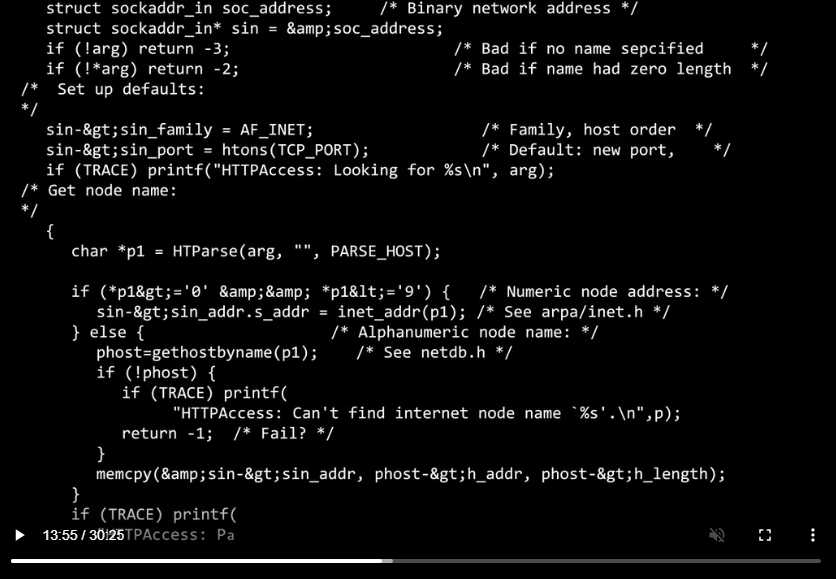| Tim Berners-Lee Gets $5.4 Million For Buggy Code |
| Written by Sue Gee |
| Friday, 02 July 2021 |
|
Sir Tim Berners-Lee jumped on the NFT bandwagon and put some artifacts relating to his original source code for the world wide web up for sale. The lot sold for $5.4 million, but the irony is that one element of the NFT is riddled with scripting errors. To date the most lucrative sale of an NFT (non-fungible token) a certificate of ownership for digital assets was for a .jpeg file, which netted over $69 million for its creator Beeple, see David Conrad's report from March 2021. With a more modest result Twitter founder, Jack Dorsey sold his first Tweet for $2.9 million. In June Sir Tim Berners-Lee created a NFT with the title ‘This Changed Everything’ including time-stamped documentation of the internet’s creation, notably its source code The online auction, conducted by Sotheby's ran from 23 - 30 June, with an opening bid of $1,000. Bidding had risen to $3.5 million on the final day of the auction but a flurry of bids in the closing 15 minutes resulted in an anonymous buyer paying $5.4 million - and within hours came the revelation that the code is full of bugs. OK, there's no suggestion that the source code is wrong or ever has been wrong. But then it's not the source code that was put on sale - it was put into the public domain in 1993 by CERN, the organization Berners-Lee worked for when he wrote the code, and it remains available for anyone to inspect, copy, modify, etc. It is what has been created as an NFT that contains very obvious errors. The NFT comprised four items, all digitally signed:
OK, there's no suggestion that the source code is wrong or ever has been wrong. But then it's not the source code that was put on sale - it was put into the public domain in 1993 by CERN, the organization Berners-Lee worked for when he wrote the code, and it remains available for anyone to inspect, copy, modify, etc. It is the final item an animation in the form of a back and white video without sound, which appears to show the almost 10,000 lines of the code being entered into a console that, since the auction ended, has attracted attention for being buggy. Take a look at this:
Notice all the HTML character entities - all the ampersands. For example: if(*p1>='0'&&p1<='9'){/ Numeric node address: */
instead of: if(*p1>='0' && p1<='9'){ / Numeric node address: */
What has happened is obvious - the code has been converted to HTML Character entity. This is also very likely an anachronism as it is unlikely that Character entities were included in the very first version of HTML. Notice that calling this a bug is very unfair as with some simple changes the code is probably correct - it is just the encoding that has gone wrong. My best guess is that someone simply pasted the code into an HTML page and the editor made the substitutions, which were then pulled out as raw text - why isn't clear. It has been suggested that this blunder could make the NFT even more valuable - just like a flaw in a banknote or a sheet of stamps adds value by rarity value. But the NFT is unique and not the entity that it marks, so how does an error in the material that has been sold relate to the fact that the original almost certainly didn't have the defect? The whole question of NFTs is still controversial. Berners-Lee never made any money for the code he wrote that serves as the foundation of today's Internet - and still hasn't. The proceeds of this sale are going to causes nominated by him and his wife. The auction was also criticized on the grounds that NFTs are inherently bad for the environment, one of the reasons that the phenomenon might proved short-lived. However Sotheby's, which presumably did make a tidy sum from the sale has pledged to pay for a carbon offset for the “minting and transaction costs of the sale”. At the end of the day the code is still in the public domain and is free of bugs - well at least it isn't littered with unnecessary ampersands.
More InformationSotheby's - Source Code For the WWW Related ArticlesWorld Wide Web's 30th Anniversary Tim Berners-Lee Awarded Turing Prize To be informed about new articles on I Programmer, sign up for our weekly newsletter, subscribe to the RSS feed and follow us on Twitter, Facebook or Linkedin.
Comments
or email your comment to: comments@i-programmer.info
|
| Last Updated ( Friday, 02 July 2021 ) |




